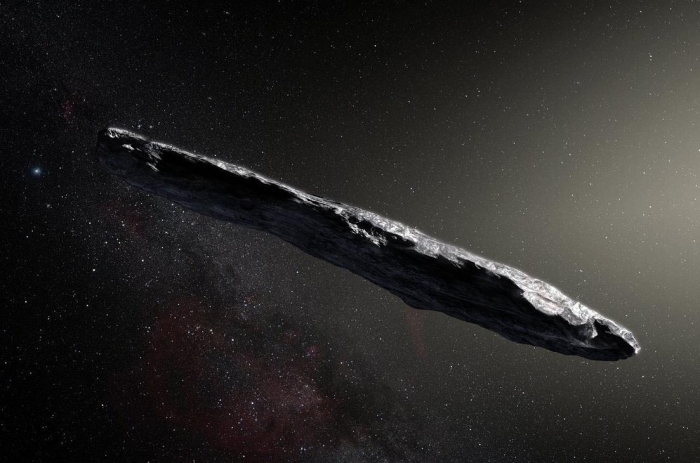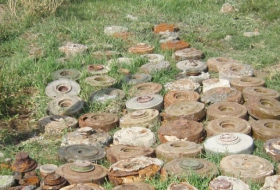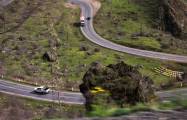Researchers have looked to understand whether the object is natural in origin – or if, as some have suggested, it was a disguised spacecraft exploring our solar system. The world’s experts say they are sure that the rock is not an alien ship, but nothing more about the mysterious rock.
But they do admit to still being mystified about how the rock could have formed or made its strange way into our solar system.
‘Oumuamua was first spotted in October 2017, and was quickly identified as the first interstellar object ever seen to have entered into our solar system. Researchers rushed to learn more about it before it disappeared from view, and it left in just a few weeks.
During that time, researchers gathered enough information about its composition and its path through the universe to suggest that there was something very strange about the object.
In fact, the data was so unusual that some suggested the rock could actually be an alien spacecraft, sent past us to explore our solar system.
Now research published in the journal Nature Astronomy claims a natural explanation is more likely. But scientists are still perplexed about what exactly that explanation could be.
“We have never seen anything like ‘Oumuamua in our solar system. It’s really a mystery still,” said Matthew Knight, an associate research scientist in the University of Maryland’s department of astronomy, who helped lead the research. “But our preference is to stick with analogues we know, unless or until we find something unique. The alien spacecraft hypothesis is a fun idea, but our analysis suggests there is a whole host of natural phenomena that could explain it.”
The rock moved through the solar system in an entirely unexpected way, mysteriously accelerating as it flew through the universe. But there was no obvious explanation for why that was.
“The motion of ‘Oumuamua didn’t simply follow gravity along a parabolic orbit as we would expect from an asteroid,” Dr Knight said. “But visually, it hasn’t ever displayed any of the comet-like characteristics we’d expect. There is no discernable coma – the cloud of ice, dust and gas that surrounds active comets – nor a dust tail or gas jets.”
To attempt to understand that strange behaviour, 14 astronomers from across the world have been working in collaboration to try to understand the rock. The collaboration allowed researchers to generate the most detailed picture of ‘Oumuamua ever – but that did not give a definitive answer to where it had come from.
“We put together a strong team of experts in various different areas of work on ‘Oumuamua. This cross-pollination led to the first comprehensive analysis and the best big-picture summary to date of what we know about the object,” Dr Knight explained.
“We tend to assume that the physical processes we observe here, close to home, are universal. And we haven’t yet seen anything like ‘Oumuamua in our solar system. This thing is weird and admittedly hard to explain, but that doesn’t exclude other natural phenomena that could explain it.”
Rather than believe that the red, cigar-shaped rock is a spacecraft, the team proposes a number of alternative natural processes.
They have considered the possibility that the object was thrown out of a giant gas planet that was orbiting another star. Previous theories have suggested the Oort cloud – a huge set of small objects floating at the edge of our solar system – was formed in exactly this way, and some of those objects might have made their own journeys through the universe.
Astronomers hope to learn more as they look up to the skies to see more visitors just like ‘Oumuamua. The Large Synoptic Survey Telescope will switch on in 2022, and should allow them to see yet more of the objects – if they are out there.
“In the next 10 years, we expect to begin seeing more objects like ‘Oumuamua. The LSST will be leaps and bounds beyond any other survey we have in terms of capability to find small interstellar visitors,” Dr Knight said. “We may start seeing a new object every year. That’s when we’ll start to know whether ‘Oumuamua is weird, or common. If we find 10-20 of these things and ‘Oumuamua still looks unusual, we’ll have to re-examine our explanations.”
The Independent
More about: alien
















































